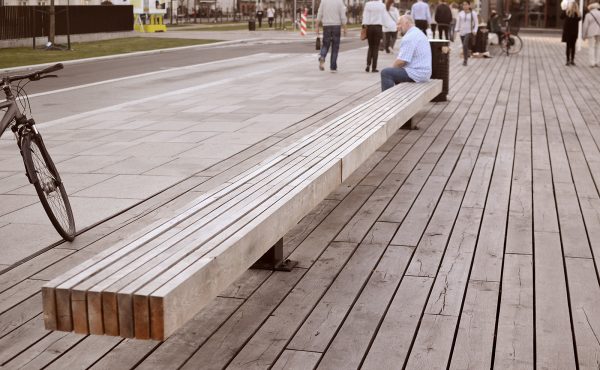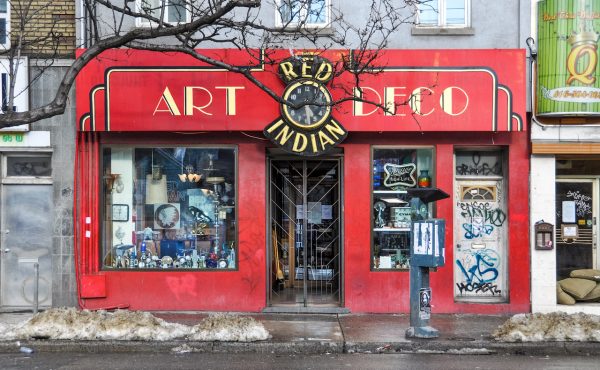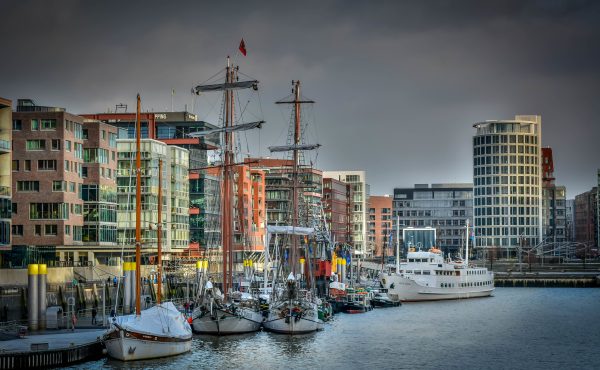
Since I helped launch Spacing back in 2003, I’ve had the chance to travel to a lot of cities and examine the things that turn my urbanist crank. While most visitors to a city point their cameras at buildings and scenes of natural beauty, I tend to focus on the more mundane elements (but equally interesting) such as street furniture. In doing so, I’ve been able to collect a good assortment of public bench designs.
A lot of places have ordinary, run-of-the-mill benches that look like they came right out of the street furniture catalogue (yes, such a thing exists), while other cities go to extreme lengths to make their benches stand out (see Hamburg and Copenhagen photos below).
The photo at the top of this post is from Toronto and only a few blocks away form my house. This style, which is from the 1970s, is often found in parks. This specific one if inside the Dufferin Loop near the CNE’s western entrance. While these 30 year old beasts are crumbling, I kinda love them anyway because they often have a charming and industrious “Toronto Parks & Recreation” stamp on the side of the arm support.
A plain but very functional bench — this one from Malmo, Sweden. It’s quite ergonomic and provides a good amount of back support.
Then there are mundane benches that have a flare, like this bench found in one of the pedestrian-only streets in Copenhagen. While I like it’s vintage look, the back support was something to be desired.
This is the opposite of mundane — a sleek, modern wood and steel bench found on the waterfront of Copenhagen, outside the super-awesome Opera House.
Back to Malmo, where along the waterfront you can find a slew of amazing benches to sit and look at the amazing buildings.
In Hamburg and Copenhagen, tree pits along major pedestrian routes are protected by placing a bench ring around the base of the tree.
Along the waterfront in Hamburg, the city is developing a former industrial site into a vibrant work and play community called HafenCity. The benches in this new neighbourhood are sleek and modern.
Another Hamburg bench, which is very playful and can double as a kid gymnasium.
This bench in Gotheburg, Sweden is one of the most unique designs I’ve come across. It took me 10 minutes to get a photo without a person sitting on it.
Another bench from Gothenburg, but in a residential neighbourhood. The Swedes know how to use wood nicely in their street furniture.
Iowa City, Iowa: This is similar to the design I found in Malmo, but has been North American-ized. That arm in the middle of the seat is usually installed to keep people from sleeping on the bench. Still, a nice and simple design.
Just south of Los Angeles is a small city called Laguna Beach (made famous by a bad reality TV show). The town has a charming shopping district and a variety of benches, including this ocean-inspired design.
Between Los Angeles and San Diego is the small city of San Clemente (made famous as Richard Nixon’s home base post-Watergate). On a handful of streets that direct traffic to the oceanfront, the city has installed traffic calming “bulb-outs” that now double as sitting areas (two photos above).
In Denver, the city’s main street — 16th Street — was converted into a pedestrian mall in the early 1980s. The mall is has a swath of artist-designed benches like the one above. I like this one for is wacky-ugliness, and not because it’s a particularly great design.
In Albuquerque, New Mexico, a series of small benches are placed at intersections. Their placement is unique and offer the opportunity for face to face conversations.
Though thousands of kilometres apart, this bench in Whistler, BC looks very similar to the one I found in Gothenburg, Sweden. I’ve noticed that Canada and Sweden often share similar design aesthetics when it comes to materials (though, the Swedes seem to have a better design sense than us Canucks).
In the Gastown neighbourhood of Vancouver the city has installed a handful of understated benches. And like other North American cities, the desire to keep people from lying on benches is apparent with the installation of arm rests that are not very useful.
Back home in Toronto, the Benchmark project converted a handful of neglected benches in Liberty Village neighbourhood into art installations.
In the comment section, please feel free to add links to photos of your favourite benches.
all photos by Matthew Blackett
























5 comments
I love the benches-around-a-tree concept – two solutions in one – the tree is protected, shaded seating is provided. There are a few of those here in Toronto on St. George Street between Harbord and Willcocks, in front of the Sidney Smith building.
Great thread Matthew!
Here’s a fave of mine from Akureyi, Iceland…
http://www.flickr.com/photos/jasonparis/4795528241/
There are some great benches on the Highline, in NYC
http://www.flickr.com/photos/bribri/3959122221/
http://www.flickr.com/photos/bribri/5832918522/
and a much less interesting one in Asbury Park, NJ
http://www.flickr.com/photos/bribri/5833175200/
Closer to home, there is a bench at Kipling and Lakeshore, near the bus stop. It looks like a melting leather couch from afar – but it’s actually part of an art installation called the Third Garden that serves as an entrance to the Assembly Hall/Humber College. It looks really neat, and very out of place – not just because of its aeshetic, but also because there’s not much public art in the area.
Located along Fort York Blvd along the perimeter of the Waterfront – Atlantis Building a unique bench / garden border system has been installed…Made up of concrete sections with twisted iron ribbon making up the arm rests and back supports it one of the more unique park / bench seating areas in the city, particularly impressive for a condo development to place so much effort into was is actually a public space..while I couldn’t find a image you can see portions of if almost complete on google streetview at Fort York and Fleet.